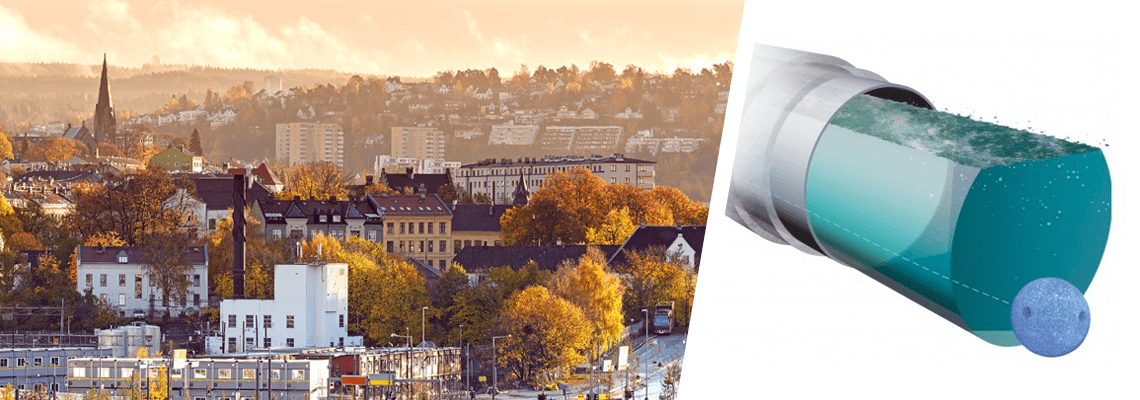Establishing a five-step leak reduction program
Using a combination of technologies, Oslo Municipality Water and Sewage (Oslo VAV) recently identified 16 leaks in 6.4 kilometres of a pipeline without disrupting service.
With ample surface water and snow cover, Norway is often perceived as a country blessed with abundant water supplies.
Yet in the spring of 2018, after three weeks without rain and record-breaking temperatures, capital city Oslo and several nearby municipalities were facing a looming water shortage.
Water restrictions were put in place, with a ban on watering lawns and gardens, after demand exceeded supply.
The unexpected ban focused attention on Oslo's limited water supplies, where the average resident uses more than 180 litres of water daily, nearly twice the amount used by residents in neighbouring Denmark.
Furthermore, almost 90 per cent of Oslo residents get their drinking water from a single source, a large lake north of the city called Maridalsvannet.
Galvanised by the ban, water utility Oslo VAV established a five-step leak reduction program to identify leaks in its transmission system, deploying a multitude of technologies and analytics.
The goal was set to reduce non-revenue water (NRW) from the current 32 per cent to 20 per cent.
Turning to inline technologies
Oslo VAV was aware that detecting leaks in large-diameter transmission mains over long distances is challenging using conventional methods such as correlators, hydrophones and listening sticks.
Recognising the limitations of traditional approaches, Oslo VAV was open to investing in a pilot using specialised inline technologies that could pinpoint the location of leaks in large transmission mains without disrupting service.
The Soerkedalen pipeline was identified by Oslo VAV for the pilot inspection as part of its leak detection program.
The 600-mm steel reserve supply line was suspected of having leaks, but previous detection approaches were unsuccessful in locating any leaks.
In the fall of 2018, Oslo VAV partnered with Xylem to apply specialised leak detection technologies in an effort to reduce real water loss.
For the pilot, Xylem recommended two inline acoustic technologies for the inspection: the free-swimming SmartBall and the tethered Sahara.
For the first survey, SmartBall was used to roll along the bottom of the pipe with the flow of water, identifying leaks and gas pockets while the line remains in service, minimising disruption.
It is designed to navigate bends and travel many kilometres under a single deployment, with the ability to detect leaks as small as 0.01 litres per minute.
For the second survey, the Sahara solution has an acoustic sensor that performs leak and air pocket detection, and a high-resolution video camera to visually assess internal pipe conditions.
The Sahara tool is drawn by water flow via a small drag chute and is tethered to a data acquisition unit on the surface, giving the operator close control to confirm suspected leaks, air pockets, and other visual anomalies.
“Most of the identified leaks were unknown to us”
The inspections took place over two days without any negative impact on operations.
The acoustic data recorded by SmartBall was analysed and then cross-referenced with client-supplied position data to give a precise location of the detected leaks.
In total, 16 leaks were identified with the Sahara inspection tool detecting a simulated leak put in place by the utility.
The Oslo VAV team was immediately impressed with the tools' capabilities when after just 130 meters of the Sahara inspection, the tool detected a simulated leak put in place by the utility.
Kjetil Tangen, group leader, leak detection department, Oslo VAV, said: “Most of the identified leaks were unknown to us. Based on the findings and current excavations and leak verifications, we estimate a total yearly water loss of 100,000 cubic meters from this pipe.”
With the pipeline condition data from the pilot, Oslo VAV now has actionable information to make the best possible remediation decisions to aid in future capital planning to achieve its non-revenue water targets.







